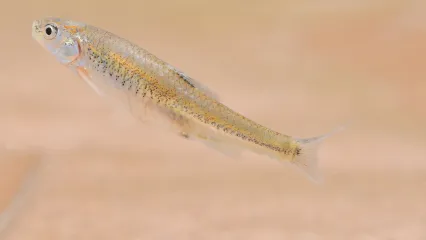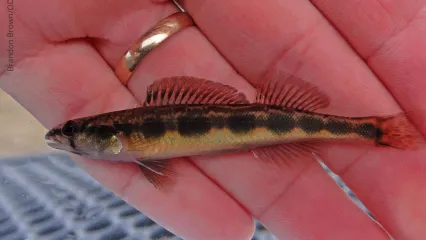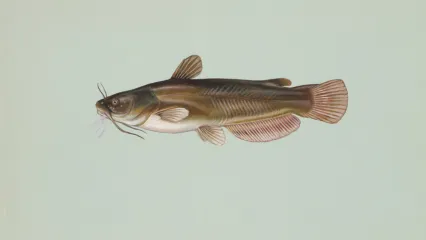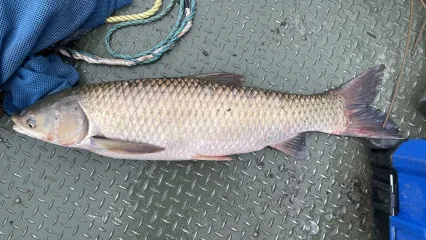
Description
This fish is a small, robust, and streamlined minnow with light silver to tan coloration. Approximately two inches in length, it can be distinguished from similar species by its proportionally small eye and dark spot at the base of the caudal (tail) fin.
Viable Arkansas River shiner populations require more than one hundred miles of flowing river for long-term survival, and the construction of reservoirs has negatively impacted these fish by breaking up these long river reaches. Agricultural practices related to ground-water pumping and runoff have also impacted water quality and quantity. Arkansas River shiners are considered to be extirpated from the Cimarron River, which may be attributed to lower flows and increased salinity. Such changes in habitat may have been more favorable for the introduced and non-native Red River shiner (Notropis bairdi), allowing this species to replace the Arkansas River shiner. Other factors that have likely contributed to population declines include incidental capture in pursuit of commercial bait fish species, seasonal drought, riparian loss and river channelization caused by human development. An additional threat comes from the encroachment of invasive plants in rivers, such as saltcedar and phragmites. Both plant species can become very dense and alter the river channel, causing hydrological changes and eventual habitat loss. Each spring and fall, biologists from both the Wildlife Diversity Program and the U.S. Fish and Wildlife Service survey the Canadian River for Arkansas River shiners. Depending on weather, accessibility, and seasonal flow rates, a total of 12 to 15 sites along the river are surveyed. A subsample of fish collected during surveys are analyzed by the Cooperative Fish and Wildlife Research Unit at Oklahoma State University. Individual Arkansas River shiners are separated and measured. The results of these monitoring efforts assist USFWS biologists in monitoring population trends and relative abundance of this species. The Wildlife Diversity Program has supported two research and recovery projects for the Arkansas River shiner through ESA Section 6 funding. These include a 1989 study to examine the life history and distribution of the Arkansas River shiner within the state, and a 1994-1997 project with the University of Oklahoma aimed at researching the species’ habitat requirements in the Canadian River.
Size
Rarely exceeds 2.5 inches in length.
Habitat
Arkansas River shiners historically occurred in large rivers throughout the Arkansas River basin, including the Arkansas, Cimarron, and Canadian rivers in Oklahoma. The Arkansas River shiner only inhabits wide and shallow prairie rivers with sandy bottoms, though it seems to use various microhabitats within these systems throughout its life cycle. These shiners often congregate in schools on the side of sandbars and ridges and rarely occur in the open water of the main river channel.
Life Cycle
A short-lived species, the majority of Arkansas River shiners only live one or two years. Reproduction can occur from May through September and often corresponds with high river flows that help facilitate the movement of eggs. The Arkansas River shiner is a pelagic spawning fish, meaning that its eggs are semi-buoyant and must float several miles downstream to develop and hatch. These fish feed on small aquatic insects and invertebrates.


